Mississippi

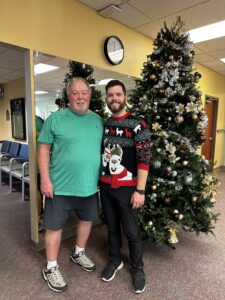 My brother-in-law, Mike Stevens, has had a busy year. Shortly after his youngest daughter, Lacey’s wedding to Chris Killinger, Mike got his hip replaced. He really needed to have it replaced before the wedding, but he did not want to be laid up during the wedding. He was determined to walk his little girl down the aisle, and to do it without a cane. That was very important to him!! He did his best to do as much as he could to give Lacey her dream wedding. Chris and Lacey did a lot too, as well as Chris’ dad to make that happen, and it was gorgeous. The wedding was in late October, and his surgery was in mid-November.
My brother-in-law, Mike Stevens, has had a busy year. Shortly after his youngest daughter, Lacey’s wedding to Chris Killinger, Mike got his hip replaced. He really needed to have it replaced before the wedding, but he did not want to be laid up during the wedding. He was determined to walk his little girl down the aisle, and to do it without a cane. That was very important to him!! He did his best to do as much as he could to give Lacey her dream wedding. Chris and Lacey did a lot too, as well as Chris’ dad to make that happen, and it was gorgeous. The wedding was in late October, and his surgery was in mid-November.
Mike was in so much pain last summer, that he couldn’t play much golf or do much hunting. He did go on a fishing trip to Alaska with brother-in-law, Mike Reed and Mike Reeds brothers-in-law. While he was in some pain, he persevered, and the guys had a great time. He is planning to play a lot of golf this summer and go hunting in the fall, because the knee surgery he was hoping to avoid is going to have 
 to take place this November. Another thing Mike and my sister, Alena Stevens plan to do before his knee replacement is to travel to Mississippi and the other gulf states. Then, Alena can cross those states off of her bucket list. They are very excited about that trip.
to take place this November. Another thing Mike and my sister, Alena Stevens plan to do before his knee replacement is to travel to Mississippi and the other gulf states. Then, Alena can cross those states off of her bucket list. They are very excited about that trip.
Mike also really enjoys watching Barrett-Jackson auctions. They auction all manner of vehicles and depending on the vehicle they can bring in well over $100,000. One day, he hopes to go to some of these auctions. His brother-in-law, Mike Reed is restoring and 61 ford flatbed pickup, two corvettes and 80’ish short bed pickup. Mike Stevens (Yes, we have to distinguish between the brothers-in-law with last names, hahaha!!) enjoys coming 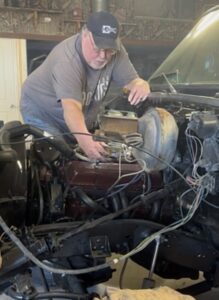
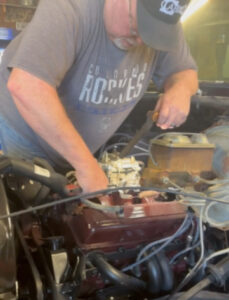 out to help him with these sometimes. Mike has been helping Mike Reed restore a couple of cars too. The guys have had a great time with that process. Both men are mechanics, and love working on these older cars.
out to help him with these sometimes. Mike has been helping Mike Reed restore a couple of cars too. The guys have had a great time with that process. Both men are mechanics, and love working on these older cars.
And of course, one of the highlights of the Stevens family summer is the annual Stevens family reunion every fourth of July. They all meet up out at Pathfinder Reservoir to swim, suntan (the girls anyway), play horseshoes, and probably some other games, to see who the reigning champions will be for the next year. They even have trophies for the winners. It’s shaping up to be a great summer for Mike!! Today is Mike’s birthday!! Happy birthday Mike!! Have a great day!! We love you!!
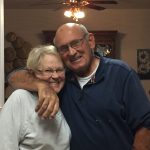
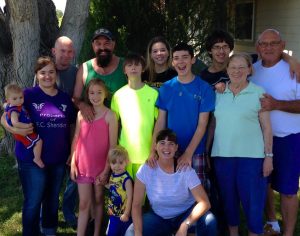 Our aunt, Charlys Schulenberg is all about family. She and Uncle Butch have three grown children, Tadd, Andi Kay, and Heath; as well as spouses and seven grandchildren. Their marriage has been very blessed, and Charlys is always happy when she gets to see her kids and grandkids. Unfortunately, their children don’t live in Forsyth, Montana where Aunt Charlys and Uncle Butch live, but thankfully they don’t live too far away…one in Helena, Montana and two in Sheridan, Wyoming. That kind of closeness means that they and easily plan for family gatherings, and I’m sure that makes everyone very happy.
Our aunt, Charlys Schulenberg is all about family. She and Uncle Butch have three grown children, Tadd, Andi Kay, and Heath; as well as spouses and seven grandchildren. Their marriage has been very blessed, and Charlys is always happy when she gets to see her kids and grandkids. Unfortunately, their children don’t live in Forsyth, Montana where Aunt Charlys and Uncle Butch live, but thankfully they don’t live too far away…one in Helena, Montana and two in Sheridan, Wyoming. That kind of closeness means that they and easily plan for family gatherings, and I’m sure that makes everyone very happy.
Aunt Charlys is such a sweet person, and a great blessing to be around…if you like being spoiled, and let’s be real, who doesn’t like being spoiled. The times Bob and I went to visit, I found out just what a great cook Aunt Charlys is. She and Uncle Butch have a lovely home in a senior community, that overlooks the Yellowstone River. That view is spectacular, and it inspires lots of pictures of stunning sunsets over the river. Not to mention 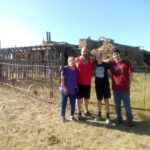
 many evenings sitting in the back yard watching the river go by as the sun sets. There is nothing more peaceful than that. They also have beautiful flower gardens, and a nice lawn that they really don’t have to mow, although I think Butch might mow sometimes. Their place is just such a lovely setting, and they feel so at peace there. Of course, they also have their vegetable garden, and from what I’ve seen, it looks pretty good…at least the past ones did. Each year is new and different, and I pray that they have a great crop this year.
many evenings sitting in the back yard watching the river go by as the sun sets. There is nothing more peaceful than that. They also have beautiful flower gardens, and a nice lawn that they really don’t have to mow, although I think Butch might mow sometimes. Their place is just such a lovely setting, and they feel so at peace there. Of course, they also have their vegetable garden, and from what I’ve seen, it looks pretty good…at least the past ones did. Each year is new and different, and I pray that they have a great crop this year.
While I have never met Aunt Charlys’ sister, Carol Hansell, who lives in Mississippi, but I love the relationship they have. Charlys, Butch, and Carol are always teasing each other, which reminds me of my own sisters and me. I love when siblings can joke around and make each other laugh, because let’s face it, you can never laugh too much. And siblings…well, they are priceless. It used to be that if you and your siblings were going to be very close, you needed to live near each other, but now with so many options on the internet, like Facebook, you can stay close, even over the miles. It makes me happy for Aunt Charlyn and her sister.


Even though we don’t get to see Aunt Charlys and Uncle Butch as much as we would like to, because we too live a way away from them. I always feel a closeness to them when we are there, or even when we are just having a Facebook conversation. They are both such friendly and welcoming people, and they make everyone feel really happy. Today is Aunt Charlys’ birthday. Happy birthday Aunt Charlys!! Have a great day!! We love you!!
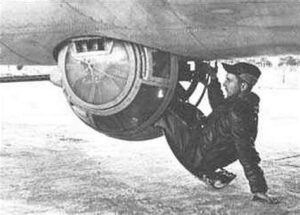
 There are many heroes is a war, and World War II is no exception. Because my dad, Allen Spencer served on a B-17, and was a Flight engineer and Top Turret Gunner, I have always had a special spot in my heart for the Flying Fortress. After all it is the plane that safely brought my dad back from the war so he could be my dad. Most people, who know anything about the B-17, know that the most dangerous station on the B-17 is the Ball Turret. In fact, the average life span of a ball turret gunner in battle is 12 seconds…seriously!! The bad thing for the ball turret gunner is that because it is a small space, the job goes to the smallest man in the group, and if there isn’t anyone who is 5’7″ or shorter, they have to find one. That is basically how Frank Perez ended up in that spot. It was very unexpected, because he trained in Biloxi, Mississippi at the B-24 training base, so it was expected that he would be assigned to a B-24.
There are many heroes is a war, and World War II is no exception. Because my dad, Allen Spencer served on a B-17, and was a Flight engineer and Top Turret Gunner, I have always had a special spot in my heart for the Flying Fortress. After all it is the plane that safely brought my dad back from the war so he could be my dad. Most people, who know anything about the B-17, know that the most dangerous station on the B-17 is the Ball Turret. In fact, the average life span of a ball turret gunner in battle is 12 seconds…seriously!! The bad thing for the ball turret gunner is that because it is a small space, the job goes to the smallest man in the group, and if there isn’t anyone who is 5’7″ or shorter, they have to find one. That is basically how Frank Perez ended up in that spot. It was very unexpected, because he trained in Biloxi, Mississippi at the B-24 training base, so it was expected that he would be assigned to a B-24.
Frank expected to be assigned to a B-24 crew but due to the “needs of the service,” Frank was assigned to the Lieutenant John J Connolly crew of a B-17 Flying Fortress. The B-17 crew already had a flight engineer, so Frank was selected for the ball turret gunner position. Knowing what I know about the ball turret gunner and knowing that anyone who knew about the B-17 also knew about the life span of a ball turret gunner, I’m quite sure that Perez instantly felt just a little bit sick to his stomach…a feeling that would be justified later. Perez had to fly for a time with a different crew while his crew finished some training. Then, he contracted pneumonia, and he was down for a month.
Finally, on July 28, 1944, Perez started flying with his crew again. Their target was the synthetic oil and ammonia plant at Merseburg, Germany. As we know, all combat missions were dangerous, but for Perez, this particular mission to Ludwigshaven, Germany, would really test his faith. Ludwigshaven was the site of large marshalling (railway) yards and a railroad depot. When the bombing run was completed, the B-17s headed back to their base in England. One of the most dangerous parts of a bombing run is maneuvering through the anti-aircraft guns with their flak. Frank’s B-17 was hit by flak and began tumbling and rolling out of control as it quickly lost altitude from about 30 thousand feet. The plane was still over Germany, and Perez could not get out of the ball turret due to the centrifugal force created as the plane fell from the sky. All he could do is watch in horror as the ground got closer and closer. He called the pilot on the intercom. No answer. Then he called “anyone.” No answer. He had to assume that he was the only survivor left…and that would not be for long.
Perez was sure that his life was over, so he started to pray. He prayed, “Well, God, if this is the way it has to be, let it be.” It was a noble prayer, but as he said, “I was under tension and wanted to live. But when I said that, at that instant, everything was just as peaceful as it can get. [I] had my whole life flash before me…from the time I was a little kid to that moment. I mean just like a movie but going like that [he snaps his fingers]. It’s hard to explain…like if you get killed, so what…you just don’t care.” It was his way of resigning himself to his fate and, then…the B-17 pulled up.
The flak might have knocked them out, and some were likely injured, but they were alive. The plane flew in at treetop level with only two of the four engines working. The crew, in an effort to lighten the load, began throwing unnecessary equipment and supplies out of the plane. Perez was still in the ball turret, as he had been for the entire mission. Finally, he saw the White Cliffs of Dover on the English coastline and knew that they 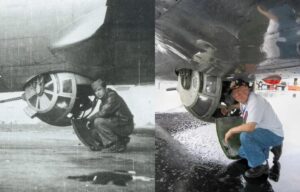
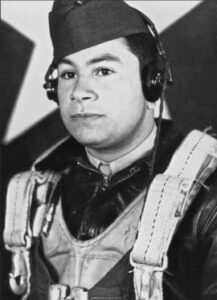 were going to make it. The B-17 was able to land at a B-24 base in England, where it was repaired.
were going to make it. The B-17 was able to land at a B-24 base in England, where it was repaired.
After completing his required combat missions, Perez was discharged and sailed home to the United States. He was back in the US before December 16, 1944. Surviving the ball turret was the saving grace for Perez, who went on to live a long and fruitful life. He died January 16, 2015, two days after his 91st birthday.
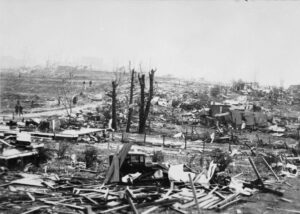 Tornadoes are a common storm in some parts of the United States. The most common area for them is called Tornado Alley. Usually, when storms go through, you might hear of tornado watches. That doesn’t mean that there are multiple tornadoes in an area, but it could. In 1936, beginning on April 5th and extending through April 6th, the states of Mississippi and Georgia found themselves in the middle of a tornado outbreak, which is several tornadoes in an area, of course. This is the only continuous tornado outbreak in United States history to produce more than one tornado with triple digit death tolls. Also, severe flash floods from the associated storms caused millions of dollars in damage across the region.
Tornadoes are a common storm in some parts of the United States. The most common area for them is called Tornado Alley. Usually, when storms go through, you might hear of tornado watches. That doesn’t mean that there are multiple tornadoes in an area, but it could. In 1936, beginning on April 5th and extending through April 6th, the states of Mississippi and Georgia found themselves in the middle of a tornado outbreak, which is several tornadoes in an area, of course. This is the only continuous tornado outbreak in United States history to produce more than one tornado with triple digit death tolls. Also, severe flash floods from the associated storms caused millions of dollars in damage across the region.
The storm, called the Tupelo-Gainesville Outbreak, produced at least 12 tornadoes. The outbreak took place over two days, April 5th and 6th, but was really just about 12 hours in duration. The storm hit Tupelo, Mississippi at 8:30pm on April 5, 1936. It was the fourth-deadliest tornado in United States history. The storm came out of a group of storm cells, and first touched down in a rural area about eight miles from the city. The twister killed a family of 13, sweeping their house away as the tornado made its way toward Tupelo. Many more were injured before it even reached the city. The tornado was retroactively rated an F5 on the Fujita scale, it caused total destruction along its path through the Willis Heights neighborhood. In that area were a number of well-built large mansions that were blown away like a house of cards.
The tornado missed the business district, and instead hit residential areas, sadly…increasing the death toll. The Gum Pond area of Tupelo was the worst hit. Homes along the pond were swept into the water with their 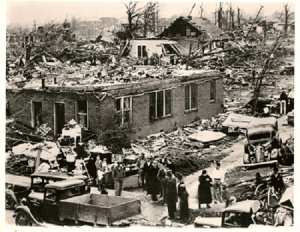 victims. The majority of the bodies were found in Gum Pond, the area which is now Gumtree Park, but many bodies were never recovered from the pond at all. The winds were so strong, that pine needles were embedded into trunks of trees. The tornado took out the large concrete Battle of Tupelo monument as it exited the city’s east side. According to records, the Tupelo tornado leveled 48 city blocks and between 200 and 900 homes. It officially killed at least 216 people and injured at least 700. The tornado destroyed the water tower and produced numerous fires in its wake. Thankfully, overnight rains, which left knee-deep water in some streets put out the fires. Though 216 remained the final death toll, 100 persons were still hospitalized at the time it was set. Subsequently, the Mississippi State Geologist estimated a final, unofficial death toll of 233. Surprisingly, one-year-old Elvis Presley and his parents were among the survivors, a fact I never knew about him.
victims. The majority of the bodies were found in Gum Pond, the area which is now Gumtree Park, but many bodies were never recovered from the pond at all. The winds were so strong, that pine needles were embedded into trunks of trees. The tornado took out the large concrete Battle of Tupelo monument as it exited the city’s east side. According to records, the Tupelo tornado leveled 48 city blocks and between 200 and 900 homes. It officially killed at least 216 people and injured at least 700. The tornado destroyed the water tower and produced numerous fires in its wake. Thankfully, overnight rains, which left knee-deep water in some streets put out the fires. Though 216 remained the final death toll, 100 persons were still hospitalized at the time it was set. Subsequently, the Mississippi State Geologist estimated a final, unofficial death toll of 233. Surprisingly, one-year-old Elvis Presley and his parents were among the survivors, a fact I never knew about him.
After ravaging Tupelo, the storm system moved through Alabama overnight and reached Gainesville, Georgia, at around 8:30am. When the storm hit Gainesville, it became a double tornado event. One tornado moved in from the Atlanta highway, while the other moved in from the Dawsonville highway. As they came into town, the two tornadoes then merged into one on Grove Street and destroyed everything throughout the downtown area…leaving 10 foot high piles of debris in some places. The worst tornado-caused death toll in a single building in United States history was at the Cooper Pants Factory. The multiple-story building was then filled with young workers, who had just arrived to work. The structure collapsed and caught fire, killing about 70 people. At the Pacolet Mill, 550 workers moved to the northeast side of the building and survived. Many people sought refuge in Newman’s department store, and its collapse killed 20 people. In addition to the complete destruction that occurred throughout downtown Gainesville, residential areas throughout the city were 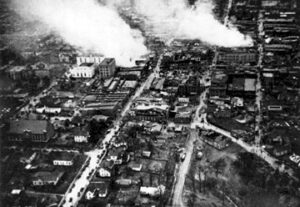 devastated as well, where 750 homes were destroyed, and 254 others were badly damaged.
devastated as well, where 750 homes were destroyed, and 254 others were badly damaged.
The Tupelo-Gainesville Outbreak took the lives of 454 people, 419 by the two main two tornadoes alone. This outbreak is the second deadliest ever recorded in United States history. Although the outbreak was centered on Tupelo, Mississippi, and Gainesville, Georgia, where the fourth and fifth deadliest tornadoes in United States history respectively occurred, other destructive tornadoes associated with the outbreak hit Columbia, Tennessee; Anderson, South Carolina; and Acworth, Georgia.
 In the year 1840, there was no such thing as the Fujita Scale, so when Natchez, Mississippi was hit by an F4 or F5 tornado on May 7, 1840, nobody knew its exact size, just that it was big…very big. Natchez in 1840 was a typical southern river town, reminiscent of the pre-Civil War days of slave labor and plantation wealth. Many people believed that nothing in their little part of the world could possibly change, and certainly not because of the weather. This was the context into which this tornado was about to enter…screaming violently.
In the year 1840, there was no such thing as the Fujita Scale, so when Natchez, Mississippi was hit by an F4 or F5 tornado on May 7, 1840, nobody knew its exact size, just that it was big…very big. Natchez in 1840 was a typical southern river town, reminiscent of the pre-Civil War days of slave labor and plantation wealth. Many people believed that nothing in their little part of the world could possibly change, and certainly not because of the weather. This was the context into which this tornado was about to enter…screaming violently.
May 7th started out hot and muggy, with overcast skies. The clouds were thick and most of that morning they produced continual rumblings of thunder. One resident recalled that the temperatures were in the mid-60s. Nothing about the day led anyone to believe that they were in eminent danger. And of course, at that time, there were no warning sirens, so the day dragged lazily along. At about 2 pm, the sky darkened so much that candles were needed to finish the mid-day meal that many were eating. The tornado touched down about 20 miles southwest of Natchez and moved in a northeasterly direction. It is believed that the tornado was rain-wrapped, because residence described it as “black masses, some stationary and some whirling” but the storm caused “no particular alarm” amongst the residents of Natchez. Most of the residents who weren’t eating dinner, were working down by the river. Dr Henry Tooley noted that the barometer began to fall rapidly, followed by the rain and then the tornado.
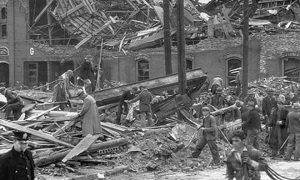
At about 2:10 pm the tornado screamed into Natchez. It lasted about three to five minutes, but the storm itself lasted about 30 minutes before it blew itself out of town. The damage path was about 10 miles long, and was estimated to be between one and two miles wide. For a time, it followed the Mississippi River hitting the southern and eastern edges of the town of Vidalia. Then the tornado crossed the river and continued on into Natchez. The town of Natchez was virtually wiped of the map, and the people on boats on the river were in serious trouble. Most of the boats on the river were flatboats, which were large rafts that carried goods on one-way trips down to New Orleans to be sold. Of the 120 flatboats docked at Natchez, 116 of them sunk. The unofficial estimated death toll was that as many as 200 people drowned after being tossed from their flatboats. It was said that “during the tornado the water rose between 10 and 15 feet, and that the water was whipped to such an extent where even a experienced swimmer could not sustain themselves on the surface.” There were also steamers one of which, The Prairie was ironically filled with a cargo of lead at the time. It sunk, of course. The steamer Hinds was badly damaged but did not sink. Its lifeless remains floated down the river to Baton Rouge where 51 bodies were found aboard.
It was really hard to establish an accurate death count, because most of the people on the river in Natchez 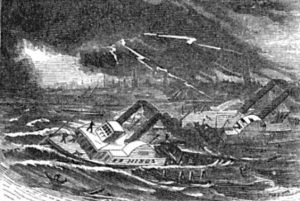 were not from Natchez. Most of the bodies that were found…those which were not lost after they floated out to sea…were unable to be identified because no-one knew who they were or where they came from. Lloyd’s Steamboat Disasters lists the number of lives lost that day at around 4004. In reality, this number was likely way off. This was a significant tornado, however damage also occurred above the river, in Natchez itself. The death toll may have also been skewed because in those days, the slaves were not always counted in census or death tolls. Either way, the Natchez tornado of 1840 ranks as the second most deadly tornado in US history, behind the Tri-State Tornado of 1925.
were not from Natchez. Most of the bodies that were found…those which were not lost after they floated out to sea…were unable to be identified because no-one knew who they were or where they came from. Lloyd’s Steamboat Disasters lists the number of lives lost that day at around 4004. In reality, this number was likely way off. This was a significant tornado, however damage also occurred above the river, in Natchez itself. The death toll may have also been skewed because in those days, the slaves were not always counted in census or death tolls. Either way, the Natchez tornado of 1840 ranks as the second most deadly tornado in US history, behind the Tri-State Tornado of 1925.
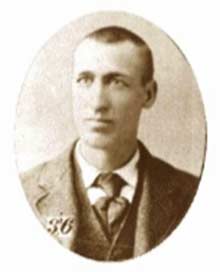 Jonathan Luther “John” “Casey” Jones was born on March 14, 1863. As a boy, he lived near Cayce, Kentucky, which is where his nickname of “Cayce” came from, but he chose to spell it “Casey”. Jones went to work for the Mobile & Ohio Railroad and performed well and was promoted to brakeman on the Columbus, Kentucky to Jackson, Tennessee route, and then to fireman on the Jackson, Tennessee to Mobile, Alabama route. That caught my attention, because my grandfathers and other family members worked for the railroad too, but it was not working on the railroad that made Casey famous…at least not totally anyway. Casey always dreamed of being an engineer. He worked hard, but did receive nine citations for rule violations, and 145 total days suspended. In the year prior to his death, Jones had not been cited for any rules infractions. His dreams came true, but not in the way he expected. In the summer 1887, a yellow fever epidemic struck many train crews on the neighboring Illinois Central Railroad, providing an unexpected opportunity for faster promotion of firemen on that line. On March 1, 1888, Jones switched to the Illinois Central Railroad, taking a freight locomotive between Jackson, Tennessee and Water Valley, Mississippi.
Jonathan Luther “John” “Casey” Jones was born on March 14, 1863. As a boy, he lived near Cayce, Kentucky, which is where his nickname of “Cayce” came from, but he chose to spell it “Casey”. Jones went to work for the Mobile & Ohio Railroad and performed well and was promoted to brakeman on the Columbus, Kentucky to Jackson, Tennessee route, and then to fireman on the Jackson, Tennessee to Mobile, Alabama route. That caught my attention, because my grandfathers and other family members worked for the railroad too, but it was not working on the railroad that made Casey famous…at least not totally anyway. Casey always dreamed of being an engineer. He worked hard, but did receive nine citations for rule violations, and 145 total days suspended. In the year prior to his death, Jones had not been cited for any rules infractions. His dreams came true, but not in the way he expected. In the summer 1887, a yellow fever epidemic struck many train crews on the neighboring Illinois Central Railroad, providing an unexpected opportunity for faster promotion of firemen on that line. On March 1, 1888, Jones switched to the Illinois Central Railroad, taking a freight locomotive between Jackson, Tennessee and Water Valley, Mississippi.
Jones was a bit of a risk taker, but I doubt if some of the people who knew about some of his “risks” would hold that against him. A little-known example of Jones’ heroic act saved the life of a little girl. As Jones’ train approached Michigan City, Mississippi, he had walked out on the running board to oil the relief valves. He had finished well before they arrived at the station, as planned, and was returning to the cab when he noticed a group of small children dart in front of the train some 60 yards ahead. They all cleared the rails easily except for a little girl who suddenly froze in fear at the sight of the oncoming iron horse. Jones shouted to Stevenson to reverse the train and yelled to the girl to get off the tracks in almost the same breath. Then he realize that she was frozen in fear. He raced to the tip of the cowcatcher and braced himself on it, reaching out as far as he could to pull the frightened but unharmed girl from the rails.
On April 30, 1900, while Casey was running the Cannonball Express, and trying to make up for a late start, it would be his heroics that would cost him his life. As Casey was coming into Vaughan, Mississippi, he did not know that three separate trains were in the station at Vaughan…double-header freight train No. 83 and long freight train No. 72 were both in the passing track to the east of the main line. As the combined length of the trains was ten cars longer than the length of the east passing track, some of the cars were stopped on the main line. The two sections of northbound local passenger train No. 26 had arrived from Canton earlier, and required a “saw by” for them to get to the “house track” west of the main line. The “saw by” maneuver required that No. 83 back up (onto the main line) to allow No. 72 to move northward and pull its overlapping cars off the main line and onto the east side track from the south switch, thus allowing the two sections of No. 26 to gain access to the west house track. The “saw by”, however, left the rear cars of No. 83 overlapping above the north switch and on the main line…right in Jones’ path. As workers prepared a second “saw by” to let Jones pass, an air hose broke on No. 72, locking its brakes and leaving the last four cars of No. 83 on the main line.
Jones was almost back on schedule, running at about 75 miles per hour toward Vaughan, and traveling through a 1.5 mile left-hand curve that blocked his view. Webb’s view from the left side of the train was better, and he was first to see the red lights of the caboose on the main line. “Oh my Lord, there’s something on the main line!” he yelled to Jones. Jones quickly yelled back “Jump Sim, jump!” to Webb, who crouched down and jumped from the train, about 300 feet before impact, and knocked unconscious by his fall. The last thing Webb heard as he jumped was the long, piercing scream of the whistle as Jones warned anyone still in the freight train looming ahead. He was only two minutes behind schedule. Jones reversed the throttle and slammed the airbrakes into 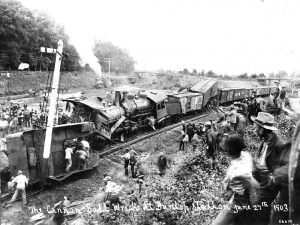 emergency stop, but “Ole 382” quickly plowed through a wooden caboose, a car load of hay, another of corn, and halfway through a car of timber before leaving the track. He had reduced his speed from about 75 miles per hour to about 35 miles per hour when he hit. Because Jones stayed on board to slow the train, he saved the passengers from serious injury and death. He was the only fatality of the collision. His watch stopped at the time of impact…3:52 am on April 30, 1900. Legend holds that when his body was pulled from the wreckage, his hands still clutched the whistle cord and brake. A stretcher was brought from the baggage car on No. 1, and crewmen of the other trains carried his body to the depot, a half-mile away.
emergency stop, but “Ole 382” quickly plowed through a wooden caboose, a car load of hay, another of corn, and halfway through a car of timber before leaving the track. He had reduced his speed from about 75 miles per hour to about 35 miles per hour when he hit. Because Jones stayed on board to slow the train, he saved the passengers from serious injury and death. He was the only fatality of the collision. His watch stopped at the time of impact…3:52 am on April 30, 1900. Legend holds that when his body was pulled from the wreckage, his hands still clutched the whistle cord and brake. A stretcher was brought from the baggage car on No. 1, and crewmen of the other trains carried his body to the depot, a half-mile away.
 When I first read about the six Knox brothers who were able to place themselves into a family history where they belonged, but in which no one had been able to connect them to before, I was intrigued, for sure. They seemed so resourceful, but I had a feeling that there was a lot more to them than just finding their place in the family history. I’m sure I will come back to these brothers over and over in the future, but when I read about Dr Nicholas C Knox, I was…well, amazed really. This man had the character and fortitude to overcome adversity, and move forward with his life, and in the end, make it better.
When I first read about the six Knox brothers who were able to place themselves into a family history where they belonged, but in which no one had been able to connect them to before, I was intrigued, for sure. They seemed so resourceful, but I had a feeling that there was a lot more to them than just finding their place in the family history. I’m sure I will come back to these brothers over and over in the future, but when I read about Dr Nicholas C Knox, I was…well, amazed really. This man had the character and fortitude to overcome adversity, and move forward with his life, and in the end, make it better.
The fourth son of Absalom Knox MD, Nicholas married Henrietta Craigan. After their marriage, the civil war slammed its way into the midst of their lives. Nicholas enlisted in the Seventeenth Mississippi Regiment, which was commanded by Colonel WS Featherstone, and was a part of McLaw’s Division. Nicholas took part in all the great battles in the Army of Virginia in which his command was engaged, but it was the Battle of Gettysburg that would change his life forever. On the second day of the battle, Nicholas lost his right arm. To make matter worse, he was captured and confined as a prisoner on Hart Island, off the city of New York, for several months before being parolled and sent into the Confederate lines again…without his right arm, and he managed to stay alive during the remainder of the battles he fought in.
During his entire enlistment time in the Civil War, Nicholas was never home…until the day he was discharged. I don’t know if he had been able to tell his wife about his arm, but even if he did, there is nothing like actually seeing it for the first time. It had to be hard for her…and for him. Many soldiers coming home from wars with life changing injuries feel very concerned about just how their spouse will look at them now. They feel like they are a lesser person than they were when they left, and that is just the physical challenges. I’m sure that an injury that cost you your arm, would be a moment that would live in your memory files for the rest of your life.
Nevertheless, Nicholas was not a man to let adversity take his life or his future from him. He returned to Mississippi, and he started the task of rebuilding his life, and getting reacquainted with his family. He started out by teaching school. Now most people would think that was a noble profession, and they would be right, but 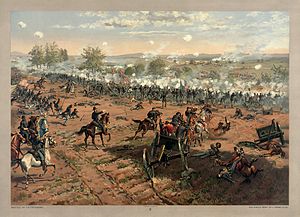 it was not enough for Nicholas. While teaching school, he began to study medicine, and received a diploma from a medical college at Nashville, Tennessee. When I think about the challenges of being a doctor in post Civil War America, with only one arm, and during a time when prosthetics were primitive at best, I am amazed. Still, Nicholas was not satisfied. He entered politics, and represented his county in the Legislature, and afterward was a practitioner of medicine in Reynolds, Mississippi, and he was an elder in the Presbyterian Church. No matter what challenges hit Nicholas, he met them head on, and succeeded in every endeavor he took on. He was not a man content to settle on the ordinary. He was truly an amazing man.
it was not enough for Nicholas. While teaching school, he began to study medicine, and received a diploma from a medical college at Nashville, Tennessee. When I think about the challenges of being a doctor in post Civil War America, with only one arm, and during a time when prosthetics were primitive at best, I am amazed. Still, Nicholas was not satisfied. He entered politics, and represented his county in the Legislature, and afterward was a practitioner of medicine in Reynolds, Mississippi, and he was an elder in the Presbyterian Church. No matter what challenges hit Nicholas, he met them head on, and succeeded in every endeavor he took on. He was not a man content to settle on the ordinary. He was truly an amazing man.
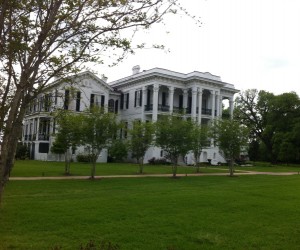 Bob and I are on a trip to Florida, Louisiana, Alabama, and Mississippi. It is a trip I have looked forward to for some time. As I have read through letters from the past and searched for past records for my family, it seems fitting that I should travel to an area of our country in which resides so much of our nation’s past. I don’t know if any of my ancestors were plantation owners or not, but I do know that some of them came from the south, so I suppose there is a possibility.
Bob and I are on a trip to Florida, Louisiana, Alabama, and Mississippi. It is a trip I have looked forward to for some time. As I have read through letters from the past and searched for past records for my family, it seems fitting that I should travel to an area of our country in which resides so much of our nation’s past. I don’t know if any of my ancestors were plantation owners or not, but I do know that some of them came from the south, so I suppose there is a possibility.
Going through Nottoway Plantation, gave us a peek into the lives of the very wealthiest plantation owners. These were people who could not “afford” to marry for love. Every child in the family knew what was expected of them. You married to better your standing and value…even if that meant marrying your cousin, as did happen in some cases, but was not totally common. Does this remind you of “Gone With The Wind”? It did us, but that is how the wealthy lived in those days, and maybe even more than we know in today’s world.
The Randolf family completed Nottoway Plantation in 1859 after 2 years of construction. It was situated right on the Mississippi River, and that was how the family traveled…by river boat, directly into New Orleans. They new no shortage of funds, and lived extravagantly…at least until the Civil War broke out in 1861. One of their sons was killed in the war, one became ill and was sent home, and one was captured. Still, the family proved what they were made of. The father, John went to Texas to grow cotton in order to make money, and the wife and some of the daughters stayed in the family home…even when the Yankee troops showed up. A wise woman, Emily offered to let the troops camp on her property and use what they needed. They took most of the vegetables and livestock, but left the home and the women alone…mostly because one of the soldiers knew one of the Randolf boys.
The home was made of the finest Virginia Cypress wood, which resisted rotting and termites, so the home has endured through the years. The shutters made of the same wood, are simply closed when hurricanes came, and the glass is even protected. The home is beautiful, and the family held many balls there as their children came of age for marrying, because they had to make sure that their children married from the right families.

While this family was wealthy and extravagant, they were also among the few families in the South who were good to their slaves. After the harvest and at Christmas time, John Randolf roasted a pig, and the family ate with the slaves. During that party, John handed out money to his slaves as a reward for jobs well done. Because of that, when the Civil War was over, and John offered contracts to his slaves, so they could now work for a wage, most of them stayed on with him. From the pay they had received through the years, they trusted him to keep his word and pay them after the war as well.
As I said, I don’t know if my family were plantation owners or not, but I like to think that if they were, they would be like John and Emily Randolf, who treated their slaves with kindness. I don’t like the idea of slavery, but I suppose that the people of that time didn’t know any different. It was a different culture, and as far as slaves are concerned, one that I think should not have happened, but unfortunately it is a part if our nation’s past.
 Watching the news every day, we hear more and more about flooding and sandbagging. Snow pack in many areas is 300% above normal or even more. Rivers are very high, and lots of people are sandbagging in the hope of holding back the water. People are being forced to move to higher ground, and some have had to abandon their homes.
Watching the news every day, we hear more and more about flooding and sandbagging. Snow pack in many areas is 300% above normal or even more. Rivers are very high, and lots of people are sandbagging in the hope of holding back the water. People are being forced to move to higher ground, and some have had to abandon their homes.
Wyoming had a lot of water last year, but nothing like they are expecting this year. I have lived here since I was 3 years old, and I don’t remember ever having water this high, but I suppose I might not have been paying much attention as a child. Now, as an insurance agent, I have clients who live by the river, and it does concern me. I know they have flood insurance, but I don’t want their homes destroyed. You can replace the home, but the memories and pictures and things are gone, and cannot be replaced.
Bob’s extended family lives in Forsyth, Montana, and they are right by the Yellowstone River. Flooding has already started there. I have seen pictures of standing water on the football field of the high school. Bob’s uncle lives just on the other side of the levee from the river, and said that if his sump pump wasn’t working, he would have 4 feet of water in his basement.
I occurs to me that an event like this one, with flooding in so many states can change lives in such 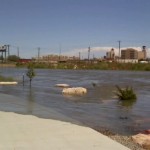 a short time…sometimes forever. The floods along the Mississippi that are devastating so much of Louisiana…not to mention the rest of the states along the Mississippi, are just horrible. Of course, I don’t wish drought on anyone, but I wish there was a balance of the two.
a short time…sometimes forever. The floods along the Mississippi that are devastating so much of Louisiana…not to mention the rest of the states along the Mississippi, are just horrible. Of course, I don’t wish drought on anyone, but I wish there was a balance of the two.
I know this season will pass, and the waters will recede. People will rebuild, and move forward again. Human beings are a resilient bunch. We tend to fight our way back from the brink in many ways. Of course, after the return, we will find ourselves forever changed because of the time we spent in the water’s path.

